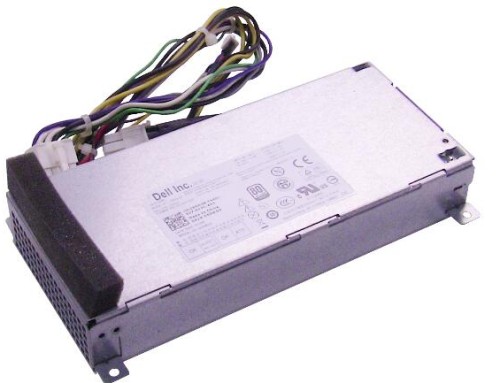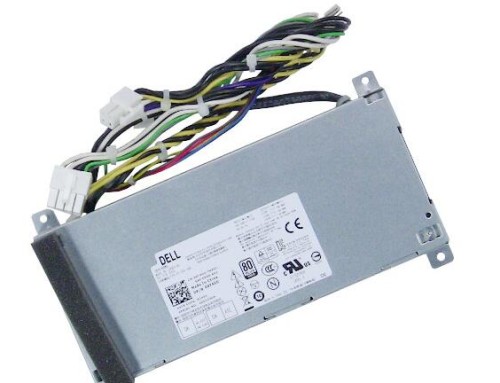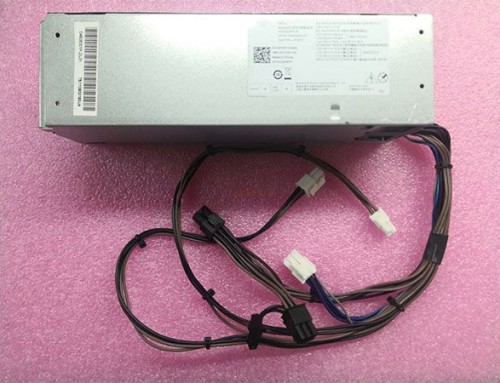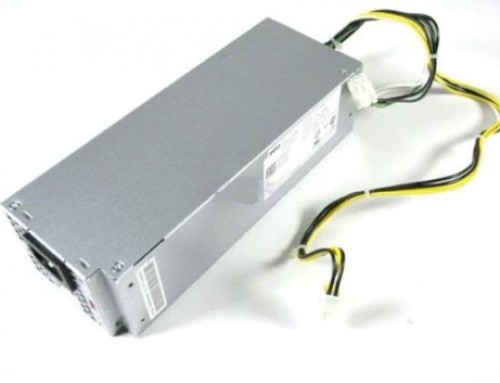Even though it’s an afterthought for most builders, the power supply is actually one of the more important parts of a build. Picking a quality power supply can mean the difference between a well running system and one that suffers from crashes and boot failures. Worse yet, cheap generic models can literally explode into flames, taking the rest of your computer with it.
Each build is going to have its own unique power needs, but generally it all boils down to two things: overall wattage, and rail specific power. Overall wattage deals with how much overall power a system needs in order to function. There are several power supply calculators available on the web that can help in determining your needs, though some of them are updated more often than others. The most important thing to remember if you’re questioning how much power you need is that oversized units can easily power undersized systems, but not the other way around, so it’s best to aim high and overshoot. Oversize power supplies can also be useful down the road if you plan to upgrade your system, as they can avoid the need to purchase a newer, larger unit.
Rail specific power is the measure of how much power certain components in a build draw from the power supply. More often than not, this usually applies to how much power large components like graphics cards pull from the power supply’s main +12V rail. For most mainstream builds with one or two mid-range graphics cards, this usually isn’t much of a concern. However, builders with high-end graphics cards or who plan on overclocking should refer to the manufacturer’s specifications for how much power a particular card needs, and then double check that the power supply they’re interested in is up to the task.
Power supplies are also often rated in terms of their efficiency, with higher quality units certified at higher 80 PLUS rating levels. These efficiency ratings enable Tom’s Hardware readers to take a similar system configuration from one of our builds, read the wall socket power draw that we report, and then calculate the required output power by applying one of the 80 PLUS efficiency ratings. For example, a build that pulls 647 W from the wall socket and that is rated at 85% efficiency will need a 550 W-rated unit (647W x 0.85). From there, if you add a little extra capacity for USB-powered peripherals and future drive upgrades, a high quality 600W unit should do the job.
Despite common misconceptions, power supply and motherboard factors have almost nothing to do with each other. The ATX motherboard form factor refers to its size rather than how it’s wired, and the ATX standard for power supplies refers to what connections are offered and how much power they can handle. ATX-compliant power supplies come in several sizing standards that include PS/2, PS3, SFX, TFX, and other less common proprietary formats.
It doesn’t help that the power-supply market is awash with products from unscrupulous manufacturers that use substandard components and overstate the hardware’s capabilities. Indeed, the abundance of PSU-related misinformation and deception in the marketplace would be comical if it weren’t so harmful to consumers. But finding a solid, efficient power supply is possible if you arm yourself with the right knowledge. We can help.
Choosing a power supply
There is no single, universal rule for selecting a high-quality power supply. Nevertheless, various indicators provide circumstantial evidence of PSU quality, and some guidelines are generally helpful.
First, always buy a power supply from a reputable manufacturer, and look for reviews of it before you buy. Avoid cheap, generic power supplies, which tend to be substandard. Look for reputable brands that offer solid warranties and support. Corsair, Seasonic, and Antec are three manufacturers with reputations for producing high-quality power supplies, though even they may offer a few duds among all the studs. Do your homework!
Larger, heavier units are preferable to puny, lightweight models. Higher-quality power supplies almost always use bigger and better capacitors, chokes, and other internal components, and they come outfitted with larger heatsinks for superior heat dissipation—all of which translates into more weight. Larger cooling fans, which typically move more air while making less noise than smaller fans, are another plus.
SilverstoneA 6+2 pin connector.
Of course, you should also check the PSU’s connectors to confirm the unit is compatible with your particular system. The term 20+4 pin refers to a connector that can function as either a 20-pin connector or a 24-pin connector. In the 6+2 pin connector shown at right, you can snap two of the pins in the connector on or off to suit your needs.
The vast majority of consumer PCs use standard ATX power supplies. Smaller units and units specially designed for enterprise and server applications are also available; but for common desktop systems, ATX power supplies are it.
When searching for a power supply, keep your eyes on three crucial features: power output, rails, and efficiency. Other specifications and features are important, too, but these three directly affect the PSU’s performance.
All about output
Manufacturers usually list their power supplies’ output in watts. A higher-watt PSU can supply more power. Desktop power supplies have a power output rating of from 200 watts to 1800 watts (for ultra-high-end, enthusiast-class products). Wattage ratings higher than that would exceed the capabilities of a typical 15-ampere electrical outlet. The important number here is the one for sustained or continuous power, not the one for peak power. Most power supplies can operate at peak power for only brief periods.
Ideally your unit will delivers plenty of power to your components and offers some extra headroom in case you want to attach additional components later. Most power supplies hit their peak efficiency levels with loads in the range of 40 to 80 percent. Building to about 50 to 60 percent of a PSU’s capacity is advisable to achieve maximum efficiency and yet leave room for future expansion.
For example, if the maximum power or combined TDP (total design power) of your system’s present components is 300 watts, a 600-watt PSU would be a good fit. In a high-end system loaded with components that may peak collectively at 700 watts, a 1200-watt PSU would work well. You can get by with lower-capacity units if you don’t think you’ll ever need to expand your system, but if you can afford it, choosing a higher-capacity PSU is a better bet.
Outervision and Thermaltake’s handy-dandy PSU wattage calculator invites you to input your build components in exacting detail—right down to CPU overclocking voltages and specific water-cooling components—and then spits out a ballpark power-supply wattage for your system.
On the subject of wattage, one common power-supply myth holds that higher-wattage power supplies necessarily consume more power. Untrue. All else being equal, a 500-watt power supply won’t consume any less power than a 1000-watt unit. That’s because a system’s components—not its PSU—dictate its power consumption. If you have 300 watts’ worth of components in a system, the system will consume 300 watts under load, regardless of whether the system is outfitted with a 500-watt power supply or a 1000-watt one. Again, a PSU’s wattage rating indicates the maximum amount of power the unit can provide to your system’s components, not how much power it consumes from the outlet.
An efficient PSU is a better PSU
A power supply’s efficiency rating is important because higher-efficiency units tend to have better components, waste less power, and generate less heat—all of which contribute to less fan noise. A power supply with an efficiency rating of 80 percent provides 80 percent of its rated wattage as power to your system, while losing the other 20 percent as heat.
Five of 80 Plus’s certification levels.
Look for units with “80 Plus” certification. Though the certification process isn’t especially stringent, 80 Plus-certified units are confirmed to be at least 80 percent efficient; and 80 Plus has tiers for even more-efficient units, including 80 Plus Bronze, Silver, Gold, Platinum, and Titanium certifications. Power supplies in the higher certification tiers tend to command very high prices, however. Average users with average needs should probably stick to the simple 80 Plus or the 80 Plus Bronze level unless they find a particularly juicy deal on a Silver or Gold PSU.
Corsair provides a thorough overview of power supply efficiency and of the 80 Plus program, if you’d like to learn more.
The great rail debate
In addition to identifying output power, manufacturers will specify the number of +12V rails their PSUs contain. A “single-rail” power supply has a single, high-power +12V rail for feeding power to hungry system components. A “multi-rail” unit divides its output between two or more +12V rails.
In a single-rail design, all of the power from the supply will be available to any component connected to the unit, regardless of the connector or cable used. In the event of a failure, however, a single-rail power supply has the potential to shoot much more current into your components.
Meanwhile, the main disadvantage of a multi-rail PSU is that it can’t share power among the different rails. For example, if you connect 25 amps’ worth of components to a +12V rail with a 20-amp maximum rating, the mismatch will trigger an overcurrent protection (OCP) mechanism and shut down, even though other rails my be available with plenty of power to spare. Consequently, with a multi-rail PSU you must pay attention to which components you’ve plugged in to which rail, a mild nuisance that you don’t have to worry about with a single-rail power supply.
Cabling: Piecemeal or whole hog?
Another consideration is cabling. Power supplies are available with hard-wired cabling, with partially modular cabling, or with fully modular cabling. In modular power supplies, you can add or remove cabling from the PSU as needed to avoid case clutter.
Technically, a power supply with hard-wired cabling is optimal because it requires no additional connections between the unit’s internal PCB and the connector that will ultimately be plugged into one of your components. One end of the cable is soldered into the PSU’s PCB and the other end terminates in a standard connector, with no breaks in the line. Whenever you introduce an additional connection between the PSU and your components—as happens with modular power supplies—you add more resistance and another potential point of failure into the line; and any increase in resistance translates into lost efficiency.
That said, the additional resistance is normally minimal and not a cause for concern for most users. Meanwhile, modular cabling greatly simplifies keeping the interior of your case nice and clean—just don’t connect any superfluous cables to keep the clutter down. Most people prefer modular PSUs, though they cost a bit more than nonmodular models.





